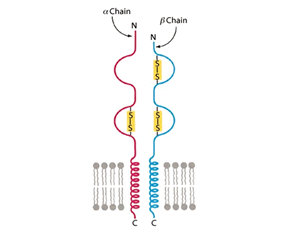
Susceptibility to rheumatoid arthritis (RA) is complex; although a number of genetic susceptibility loci have been identified that appear to confer increased risk. Among these, genes encoding sequence variants in the major histocompatibility complex (MHC) class II molecule, known as the “shared epitope” (SE), have been known for decades and have the strongest link to RA susceptibility. Recognizing that RA appears to be uncommon in Africans currently living in Africa, Hughes et al (Arthritis Rheum 2008; 58: 349) explored the prevalence of SE in African Americans enrolled in the Consortium for the Longitudinal Evaluation of African Americans with Early Rheumatoid Arthritis (CLEAR) registry and the degree to which European admixture accounted for SE prevalence.
Methods
Self-identified African American patients with early RA (disease < 2 years) were recruited from 4 sites in the Southern U.S. (Birmingham, Alabama; Atlanta, Georgia; Chapel Hill, North Carolina; and Charleston, South Carolina) and compared to age, gender, and geographically matched African American control subjects. Genotyping of the HLA-DRB1 region, assessment of admixture using a panel of ancestry-informative markers (AIMs), and measurement of anti-CCP antibodies was performed in addition to collection of sociodemographic and RA clinical data.
Results
HLA-DRB1 genotyping was performed in 321 African American RA patients. Of these, 42% had at least one SE allele, compared to 25% of African American control subjects (p=0.0004). The frequencies of the *0401, *0404, *0405, and *1001 SE alleles were significantly higher in the African American RA group vs. control, while the *1101 allele was more frequent in the control group.
Admixture data was available on 313 African American RA patients and was compared to 82 controls. RA status was not significantly associated with the percent of European admixture; however, for both RA patients and controls, the mean percent of European admixture was significantly higher in subjects with any SE alleles vs. those without SE (16.7 ± 8.9% vs. 14.7 ± 8.3%, respectively; p<0.05). Among SE alleles, only *0401 was significantly associated with European ancestry.
Anti-CCP antibody data were available in 286 African American RA patients. Anti-CCP antibody was significantly higher in subjects with at least one SE allele compared to those with no SE alleles (49% vs. 33%, respectively; p=0.01)
Conclusions
The prevalence of HLA-DRB1 SE alleles is higher in African American RA patients compared to demographically matched controls. European admixture was associated with the presence of SE alleles, but not of clinical RA, in African Americans. The presence of anti-CCP antibodies was associated with the presence of SE in African American RA patients.
Editorial Comment
The CLEAR registry is a valuable resource for investigating RA in a group typically not included in cohort studies or clinical trials of RA. This analysis is particularly interesting in its suggestion that the difference in the prevalence of RA between African Americans and West Africans may be due to susceptibility genes introduced through European admixture. The finding that European admixture itself was not associated with disease, but merely the presence of SE, demonstrates that SE alone is not sufficient to cause disease. It remains to be shown whether known environmental triggers of RA (i.e. cigarette smoking) interact to the same degree in African Americans as those of European descent to increase the risk of disease. Although not directly compared in this study, the prevalence of SE presented in the CLEAR population and the correlation between SE and CCP are lower than those seen in Caucasian populations. This could suggest that the relationships between susceptibility genes, autoimmunity, and environment may function differently in African Americans than Caucasians, for reasons that have yet to be determined.

